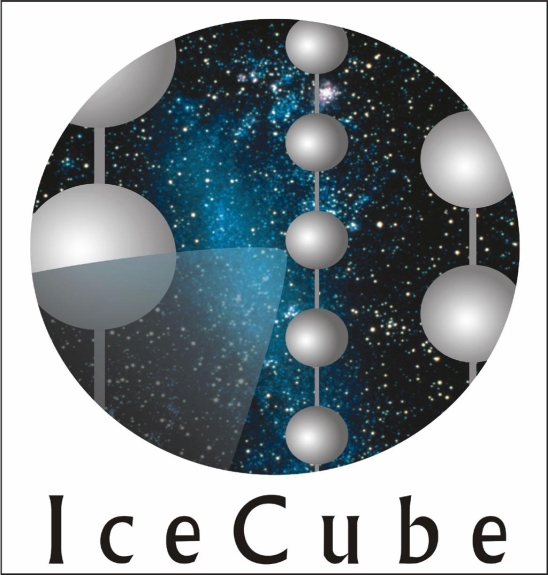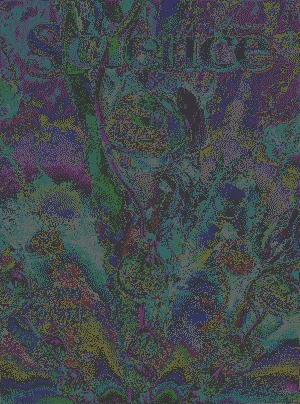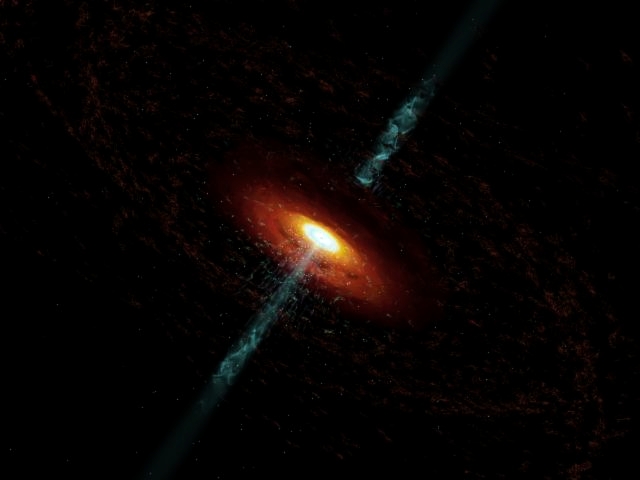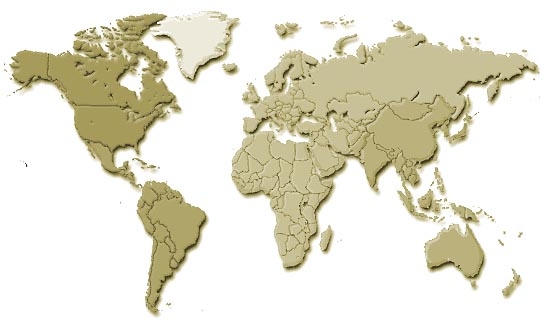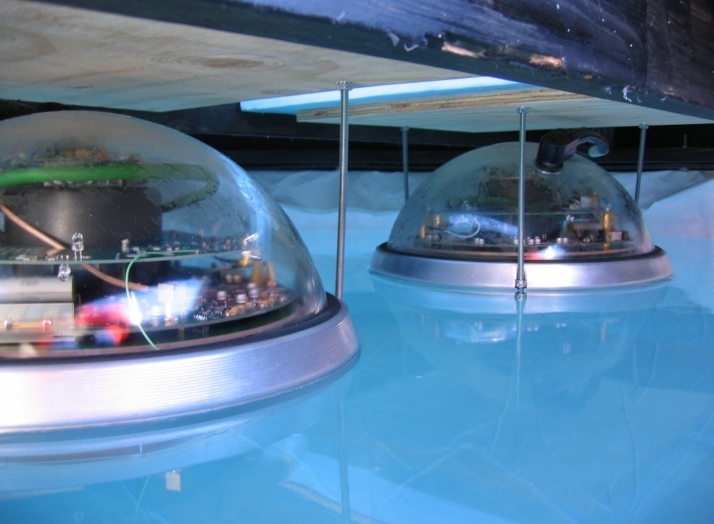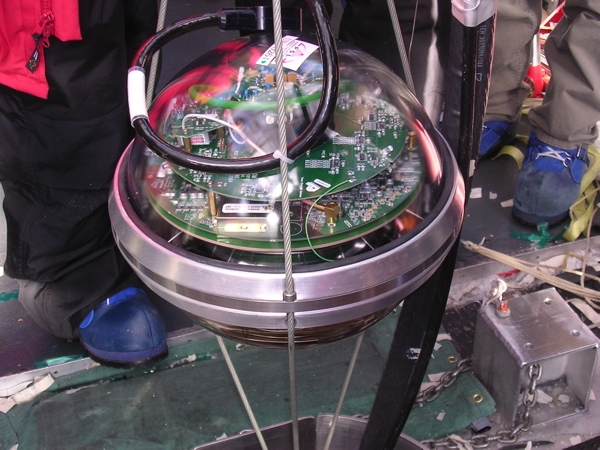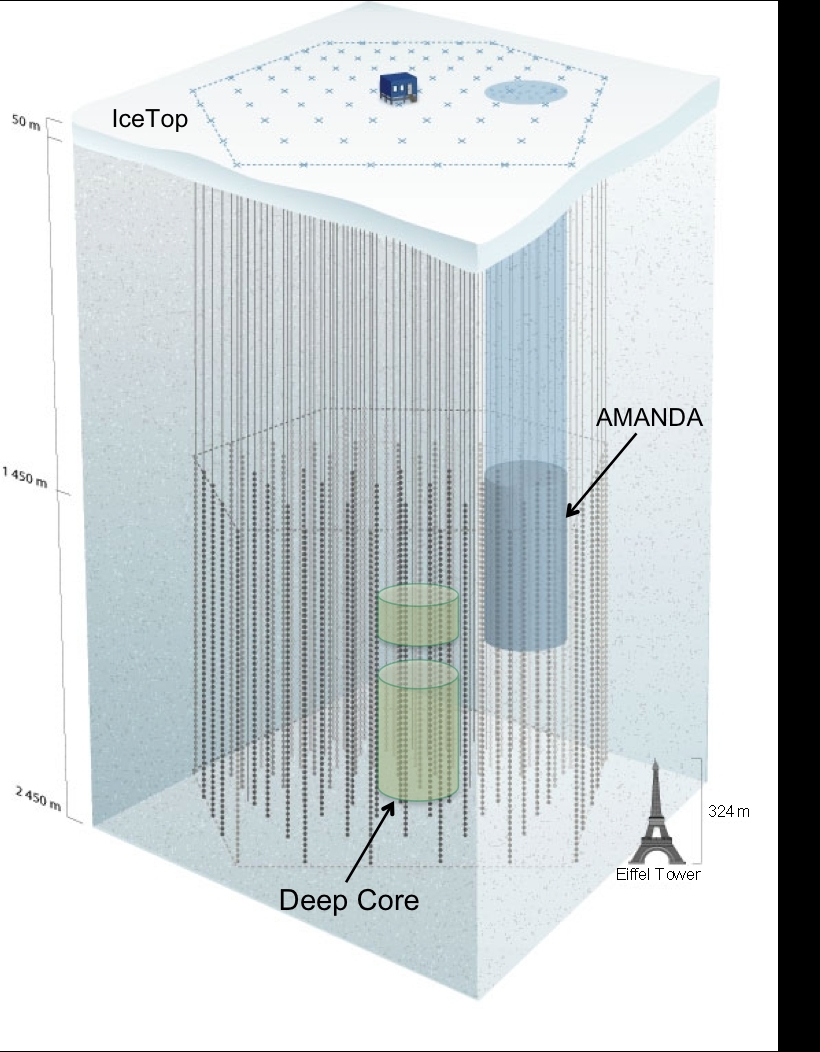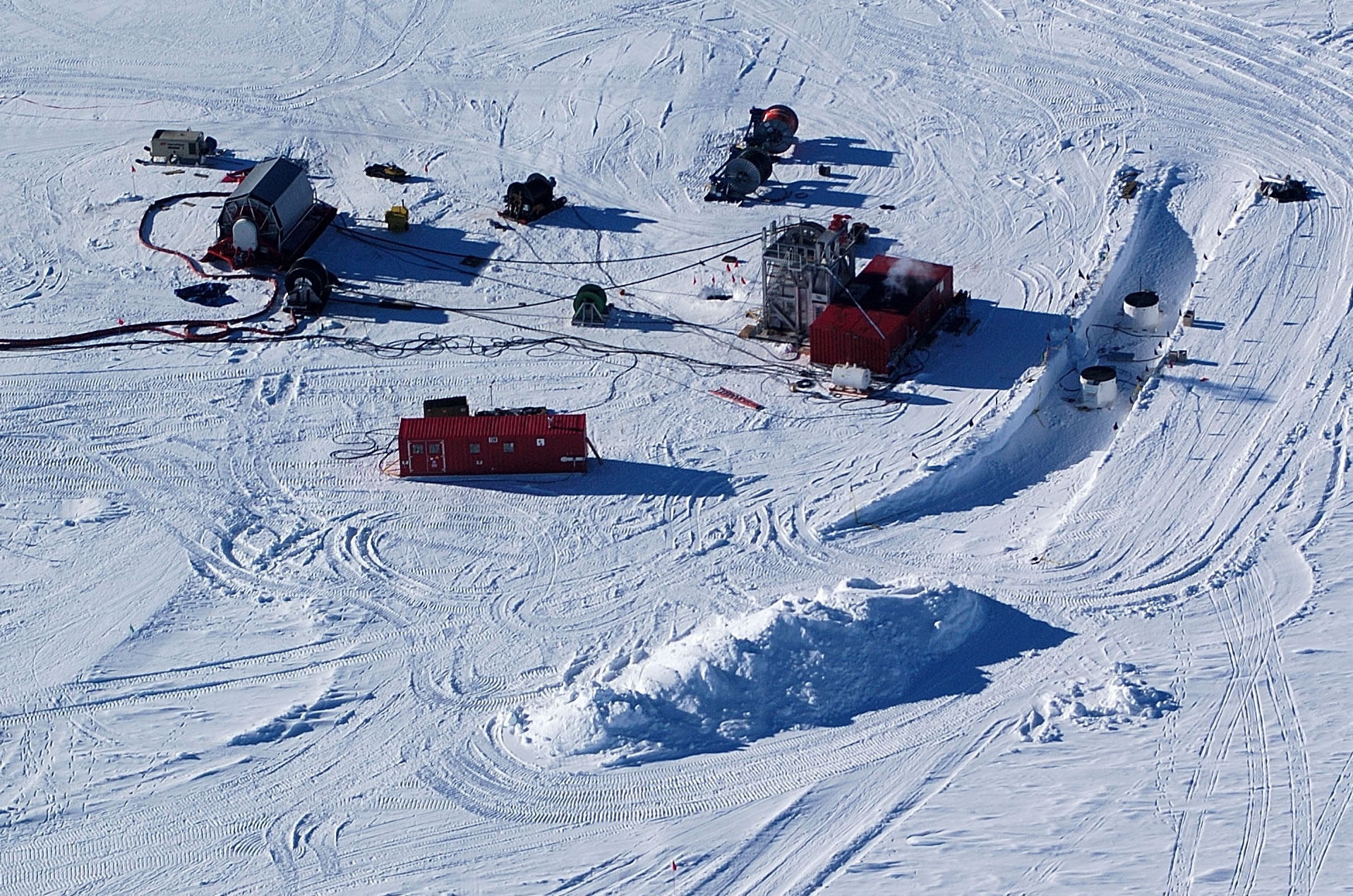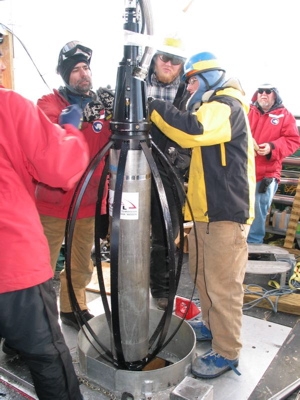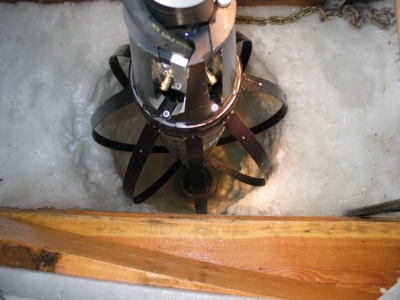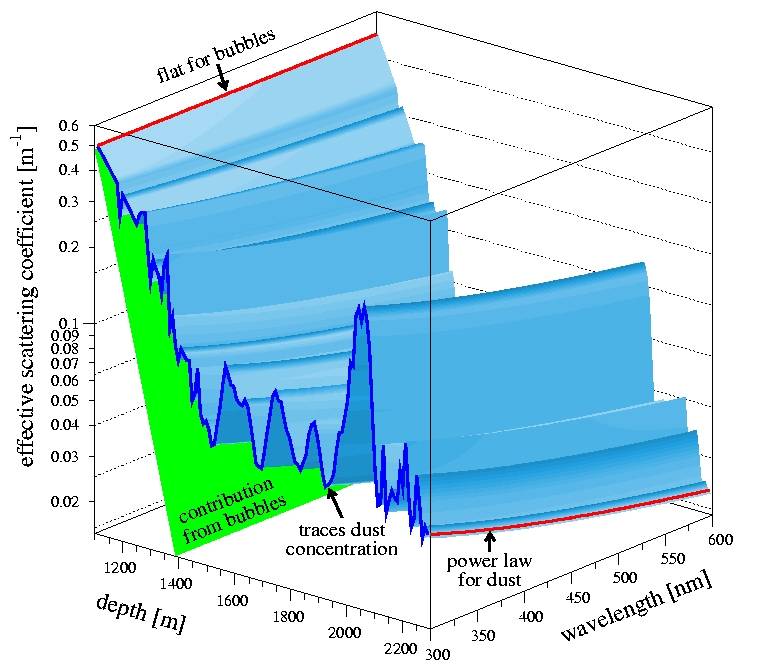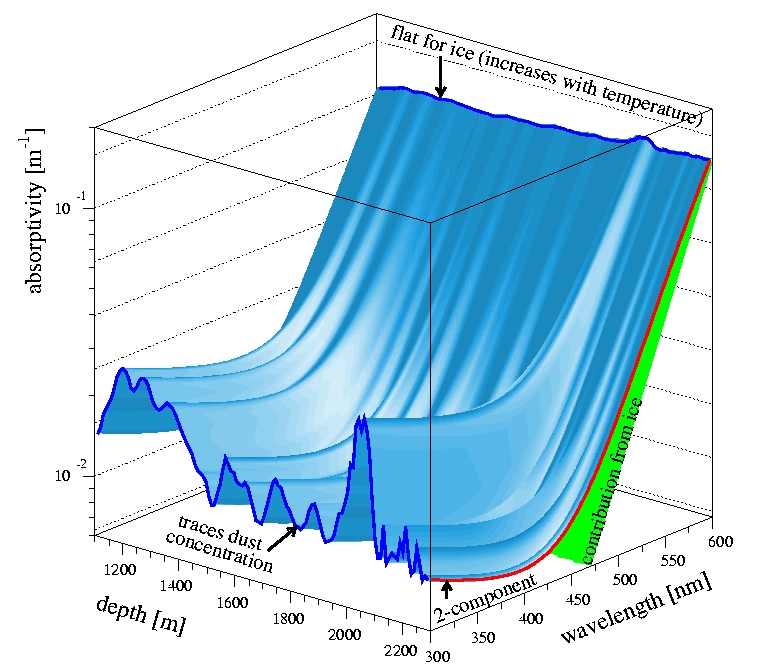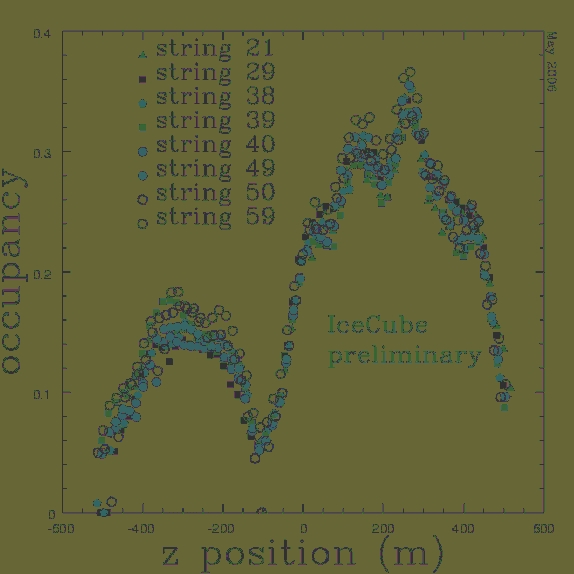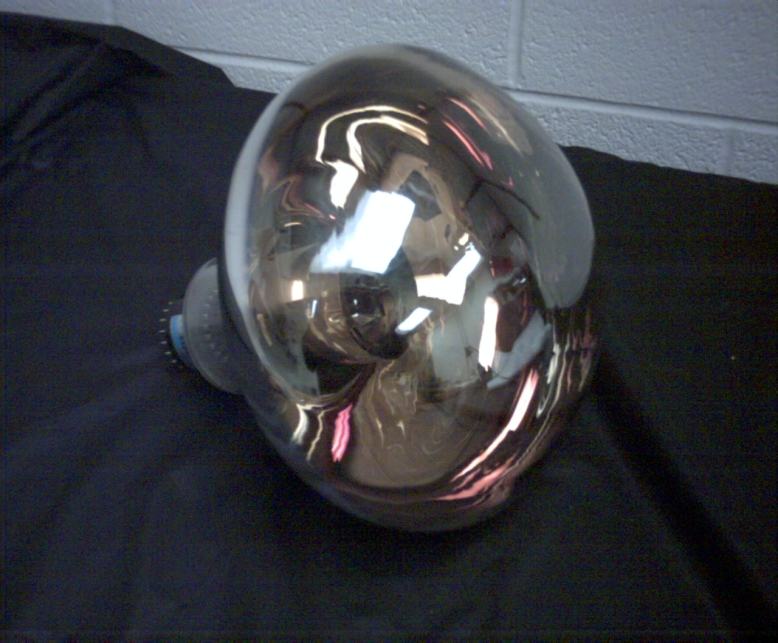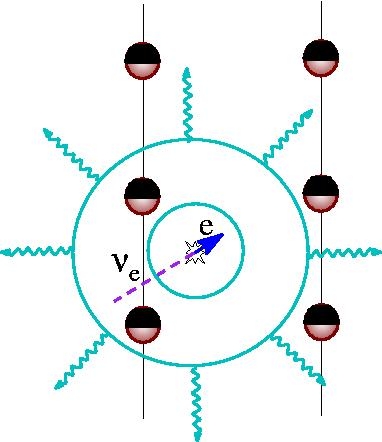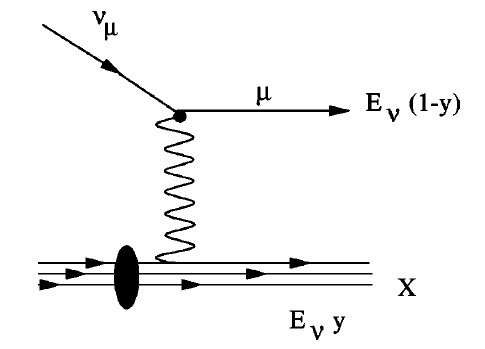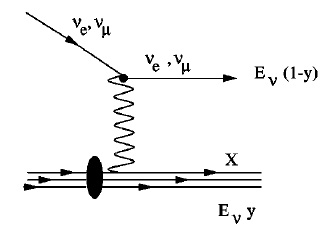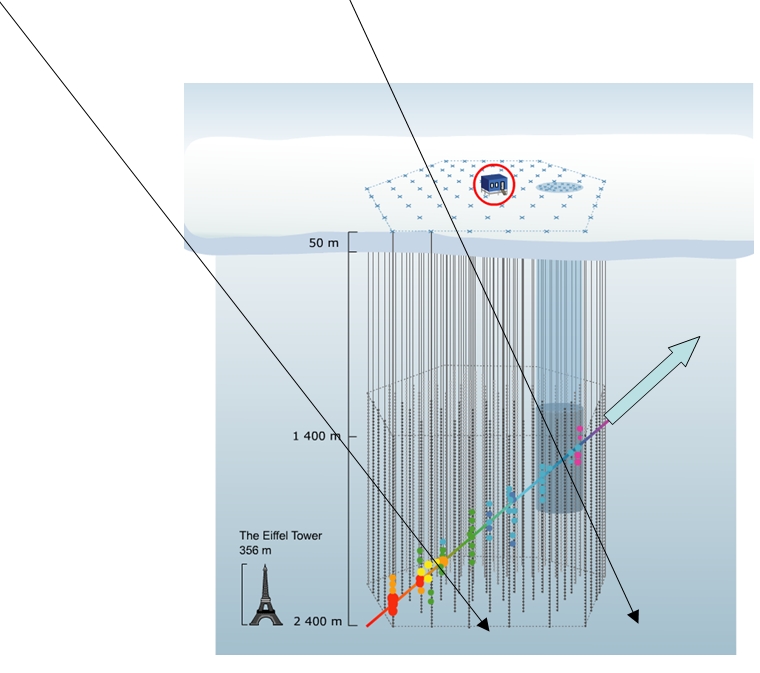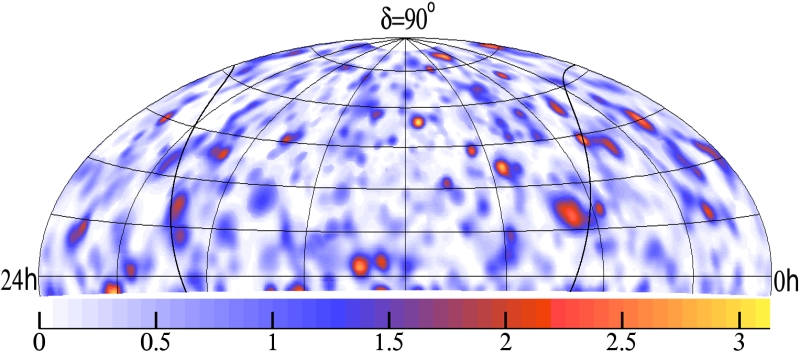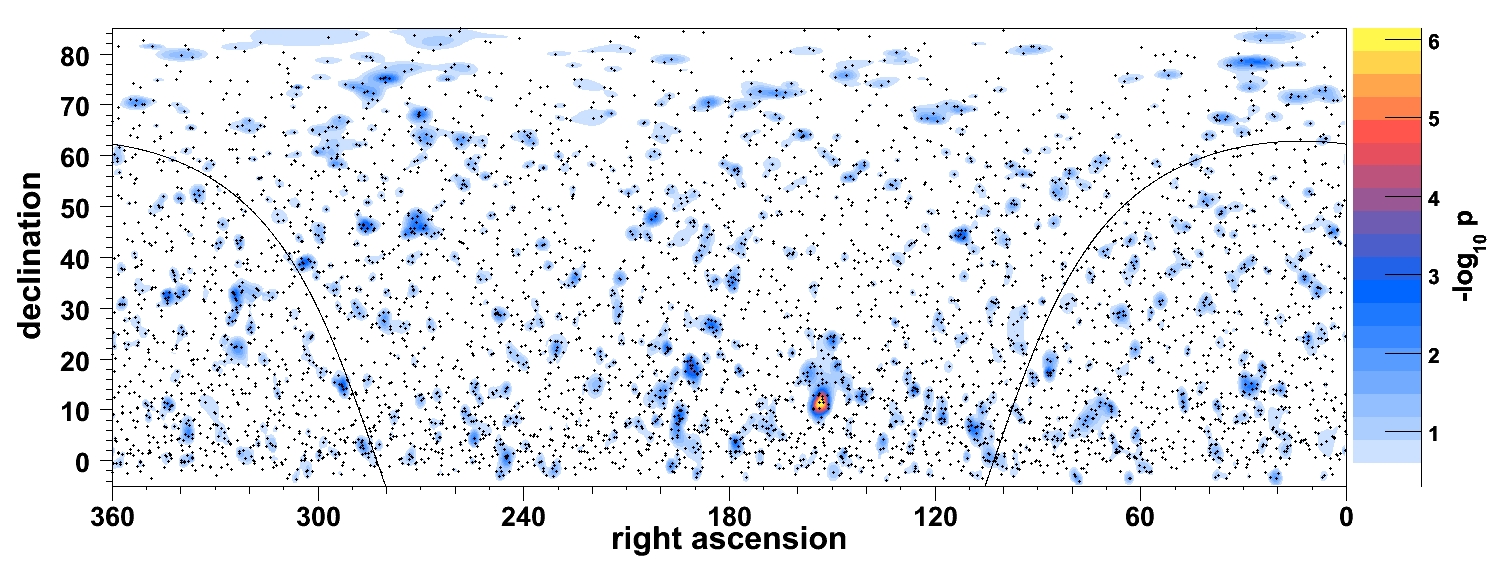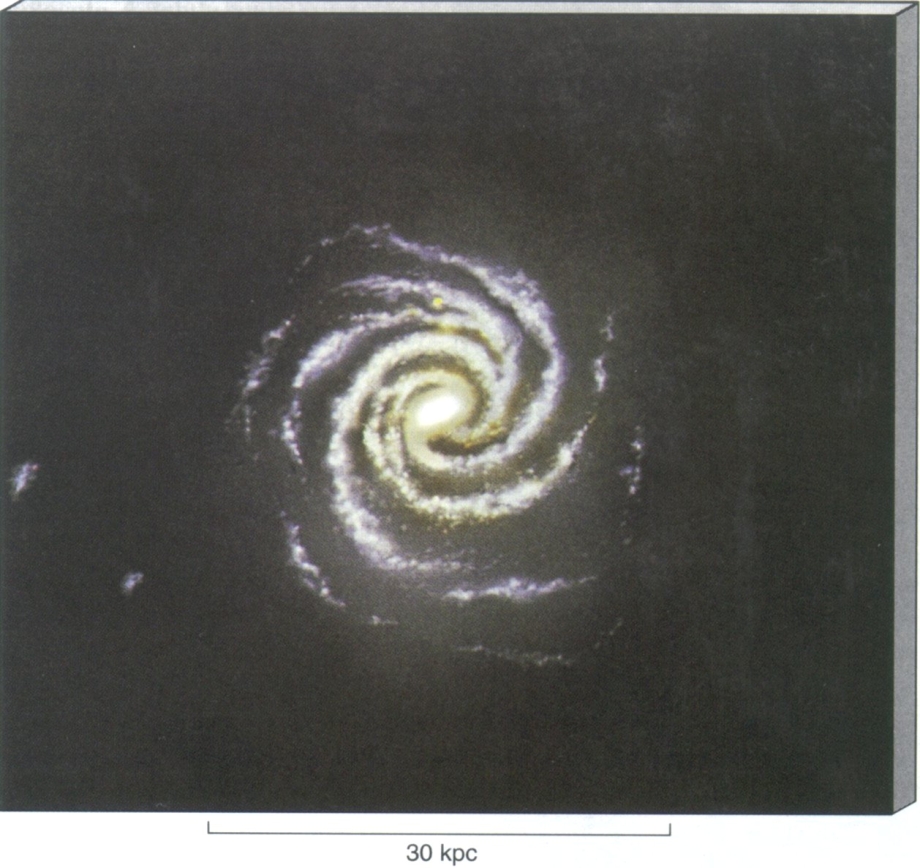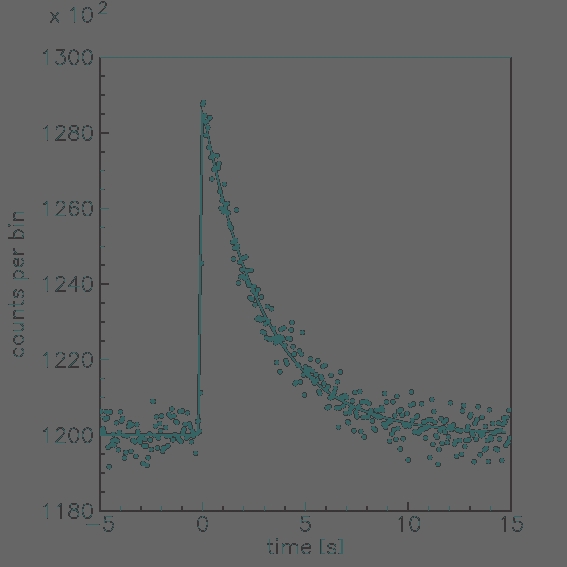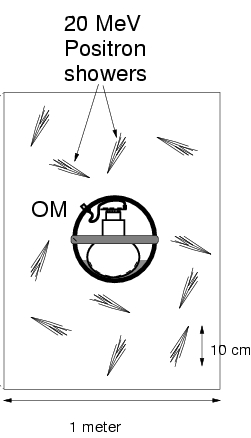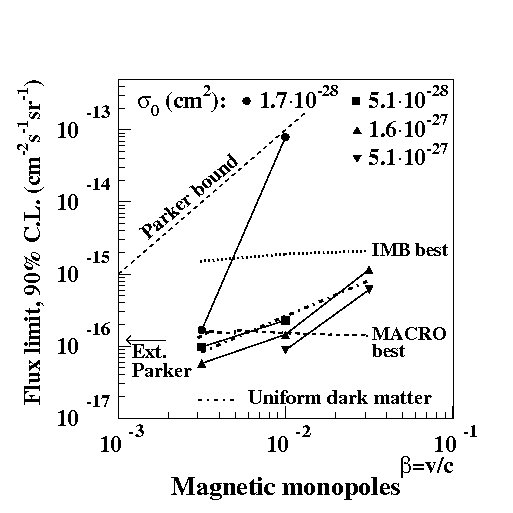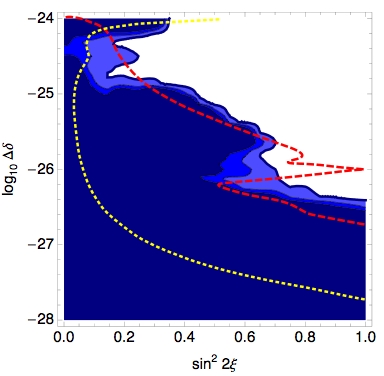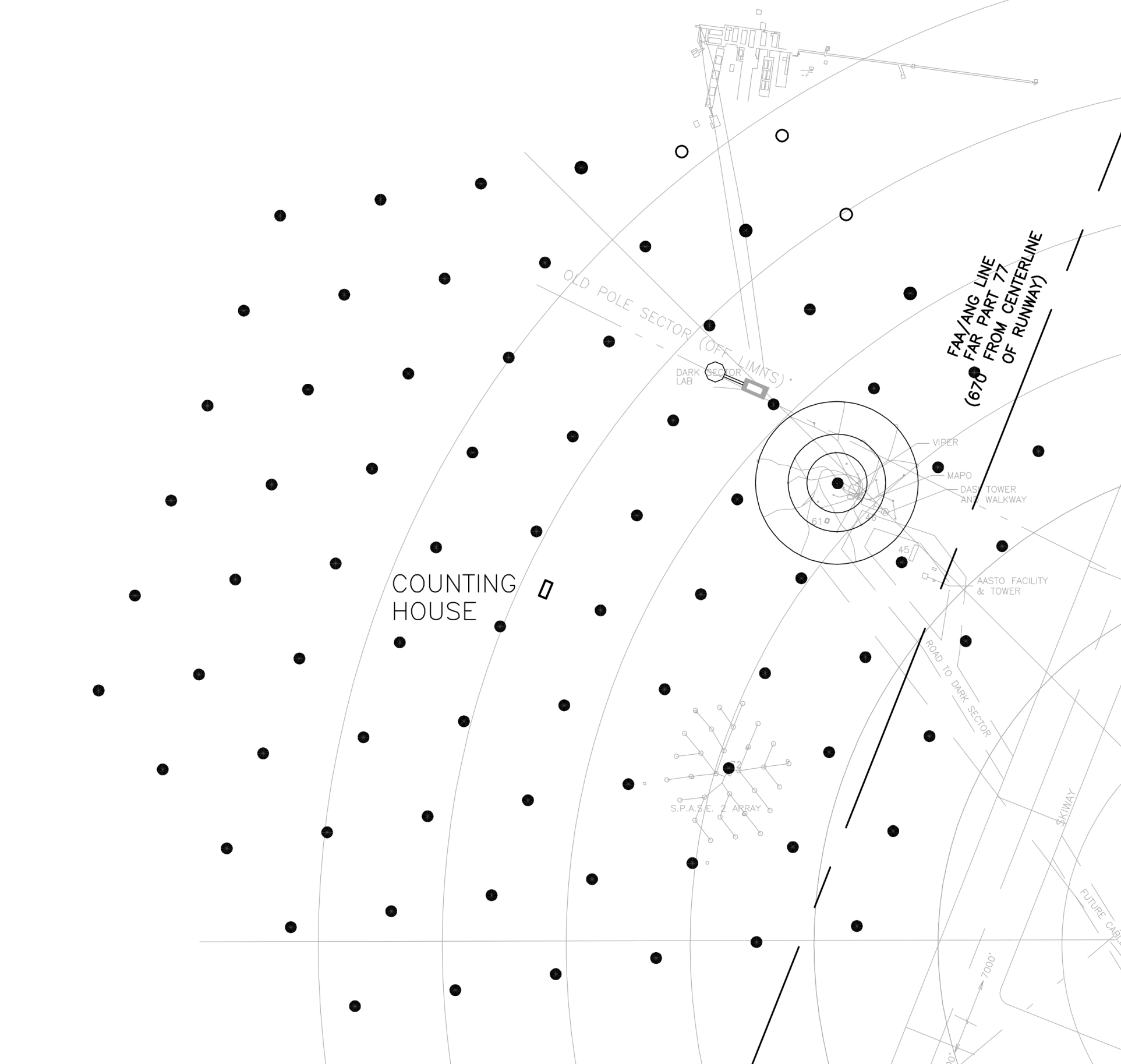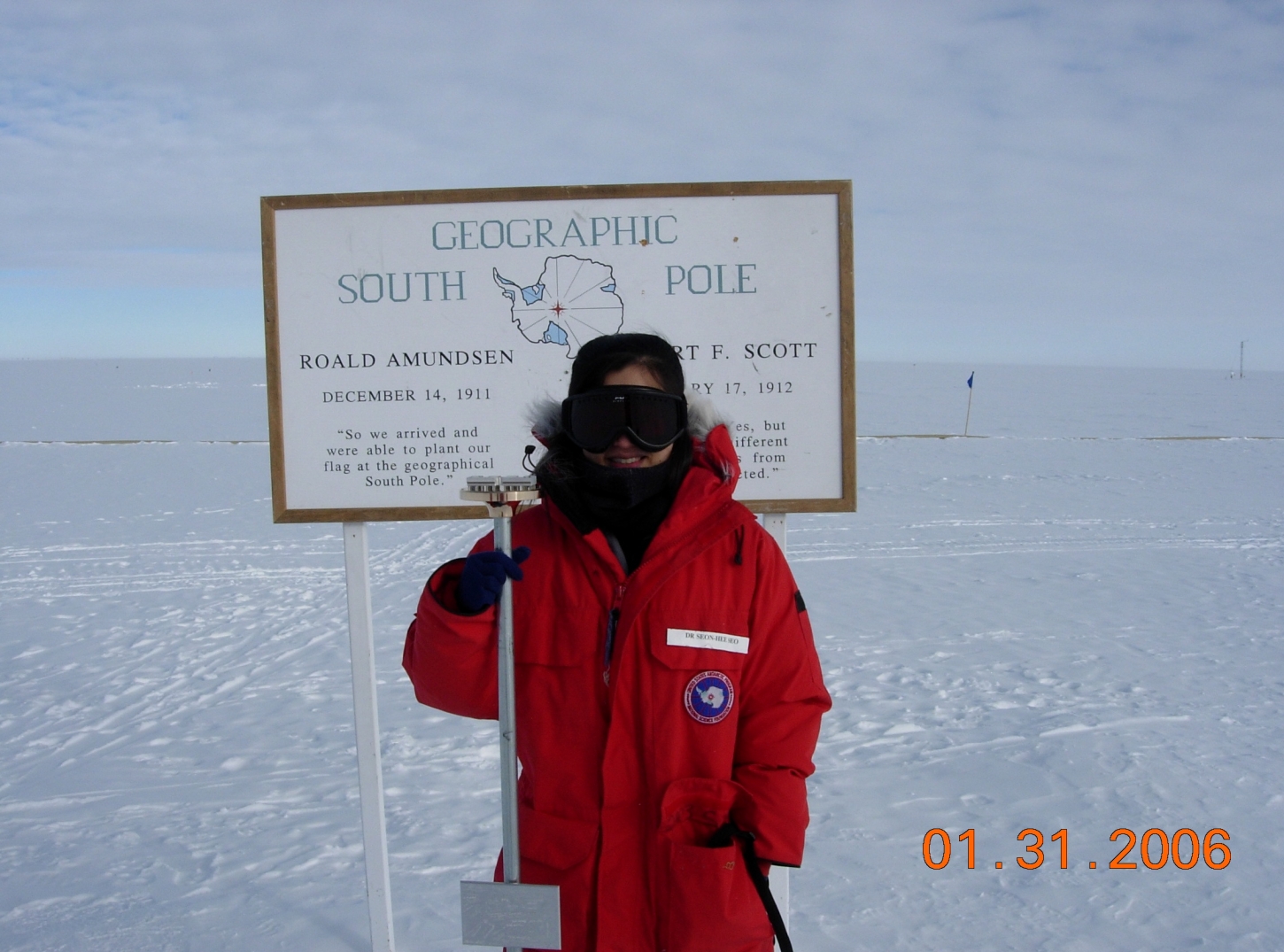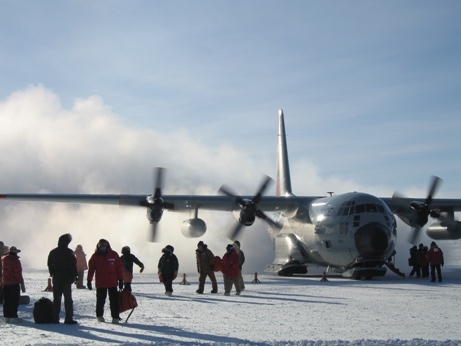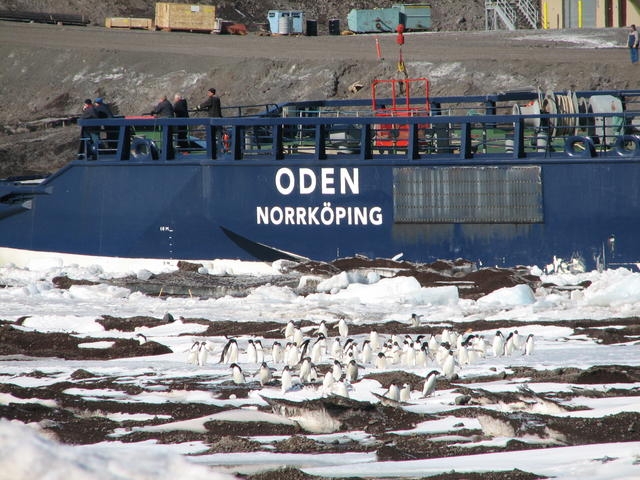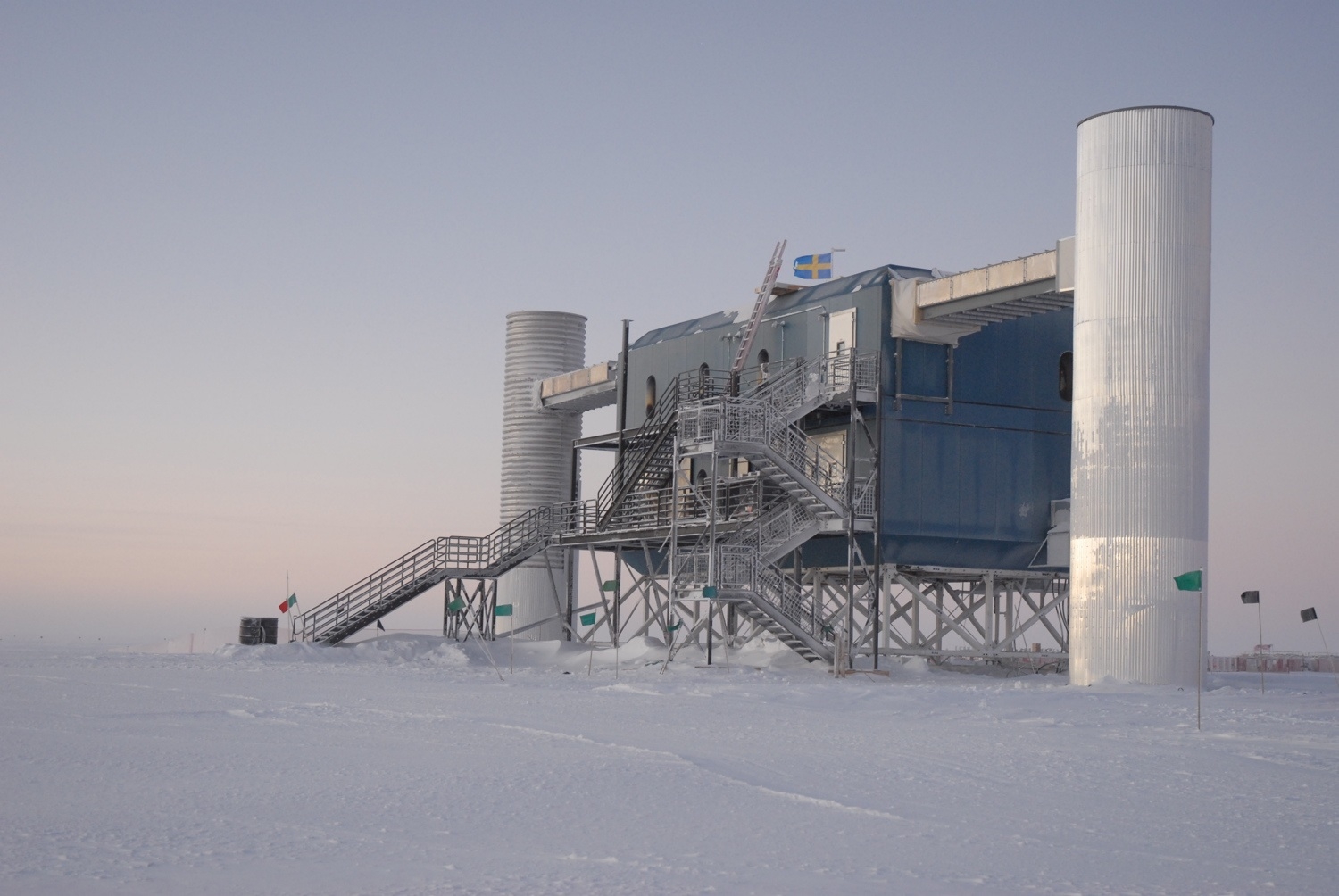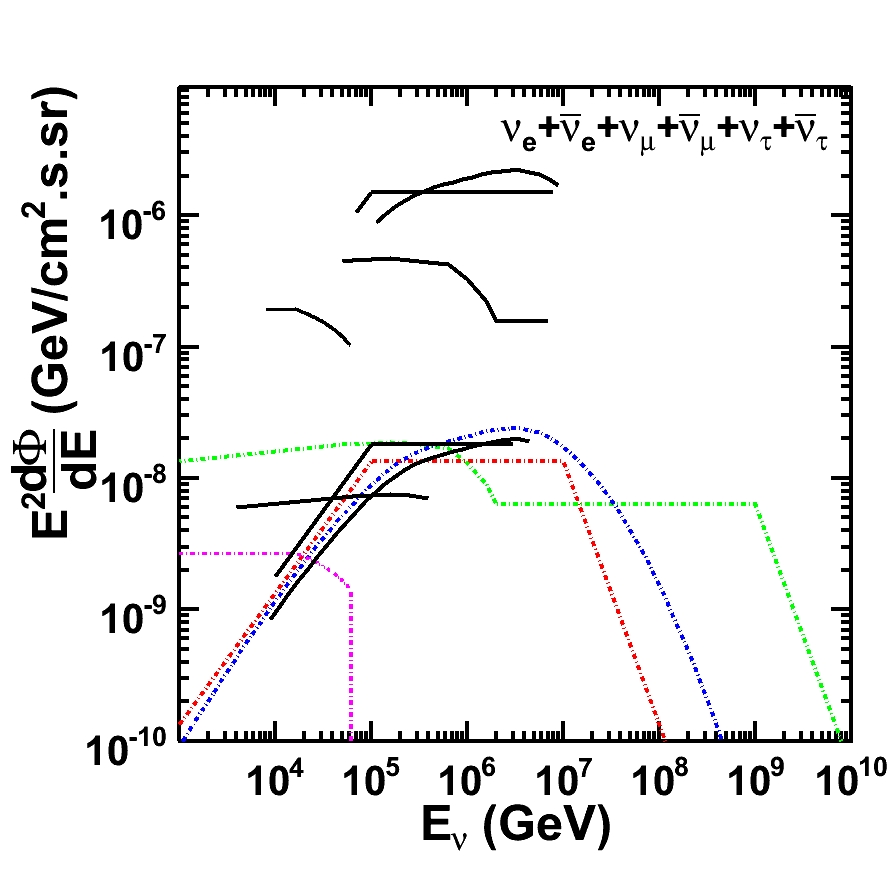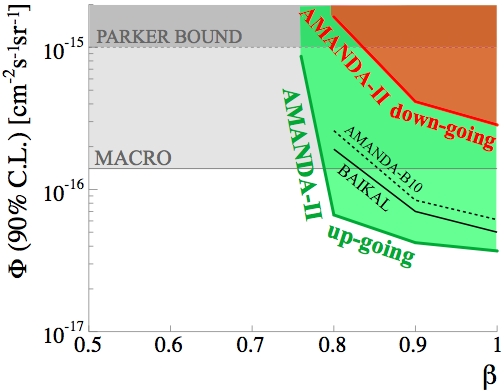Recent Results & Status
of IceCube
Dark 2009
Christchurch, NZ
Jan. 18 - 24, 2009
Seon-Hee Seo
(Stockholm Univ.)
for IceCube Collaboration
Dark09, Christchurch,
New Zealand
IceCube Talk
Seo, Stockholm Univ.
2
Outline
! Introduction
! The IceCube Detector
! Recent Results
! Current Status
! Future: Deep Core
! Conclusion
Science cover: 2007
Vol. 315, issue 5818
Dark09, Christchurch,
New Zealand
IceCube Talk
Seo, Stockholm Univ.
3
We would like to answer:
-- What are the sources?
-- What's the physics at/near the sources?
At earth we observe:
-- Cosmic rays (~80% protons)
-- Photons
-- Neutrinos
Crab
Nature-produced High E Particles
4
Detecting Astrophysical Particles
AMANDA
IceCube
• Photons get absorbed (or pair-production) above 50 TeV.
• Protons get bent below 10 EeV and strongly attenuated above
50 EeV (GZK cut-off).
• Neutrinos cover all energy range, point back, but hard to detect.
Dark09, Christchurch,
New Zealand
IceCube Talk
Seo, Stockholm Univ.
5
Neutrino Telescope
Requirements:
-- Large detection volume to compensate for small cross section and
small flux of neutrinos
-- Optically transparent medium: water, ice
Back to top
Detectors:
-- Water: DUMAND, Baikal, ANTARES, NESTOR, NEMO, KM3Net
-- Ice: AMANDA, IceCube (successor of AMANDA)
Water
Ice
Location
Northern
Southern
Deployment
Mostly year-round
austral summer
PMT noise rate
~ 40 KHz
~0.5 KHz
Scattering length
> 100 m @466nm
~ 20 m @ 400 nm
Absorption length
~ 60 m @466 nm
~110 m @ 400 nm
Detector geometry
Unstable
Stable
Medium
Dark09, Christchurch,
New Zealand
IceCube Talk
Seo, Stockholm Univ.
6
The IceCube Collaboration
USA (15):
Bartol Research Institute, Delaware
Pennsylvania State University
UC Berkeley
UC Irvine
Clark-Atlanta University
University of Maryland
University of Wisconsin-Madison
University of Wisconsin-River Falls
Lawrence Berkeley National Lab.
University of Kansas
Southern University and A&M
College, Baton Rouge
University of Alaska, Anchorage
University of Alabama
Georgia Tech University
Ohio State University
Back to top
Sweden (2):
Stockholm University
Uppsala University
Back to top
UK (1):
Oxford University
Belgium (4):
Université Libre de
Bruxelles
Vrije Universiteit Brussel
Universiteit Gent
Université de Mons-Hainaut
Back to top
Germany (7):
Universität Mainz
DESY-Zeuthen
Universität Dortmund
Universität Wuppertal
Humboldt Universität
MPI Heidelberg
RWTH Aachen
Japan (1):
Chiba University
New Zealand (1):
University of
Canterbury
Back to top
Netherlands
(1):
Back to top
Utrecht University
Switzerland
(1):
EPFL, Lausanne
~250
members
33
institutions
9
countries
Dark09, Christchurch,
New Zealand
IceCube Talk
Seo, Stockholm Univ.
7
~1 Km
Summer: ~240 people
Winter: ~50 people
IceCube
New Station
South Pole
AMANDA II
Skyway
Amundsen-Scott South Pole Station
Antarctica
Dark09, Christchurch,
New Zealand
8
The IceCube Detector
IceTop (air shower array):
80 stations
2 frozen-water tanks / station
2 DOMs / tank
InIce:
80 strings
60 DOMs / string
17 m vertical spacing
125 m between strings
~1km
-1450m
-2450m
InIce
AMANDA: 1996 - 2008
19 strings
677 OMs total
10-20 m vertical spacing
~40 m between strings
I’ll get back to
this later.
Deep Core
Dark09, Christchurch,
New Zealand
IceCube Talk
Seo, Stockholm Univ.
speed: ~90m/hr
9
Hot-water drilling
Hose reel
Drill tower
5 MW Hot
water
generator
String Deployment
Drilling to 2500 m < 40h
String deployment ~ 12h
Dark09, Christchurch,
New Zealand
IceCube Talk
Seo, Stockholm Univ.
10
Scattering
Back to top
Absorption
Bubbles
dust
Average optical parameters:
λ
abs
~ 110 m @ 400 nm
λ
sca
~ 20 m @ 400 nm
Ice Properties
At bottom half of detector (very clear ice):
λ
abs
~ 220 m,
λ
sca
~ 40 m @ 400 nm
Ice
Ice
Digital Optical Module (DOM)
PMT base
LED flasher
board
main board
Housed in
33 cm Benthosphere
PMT
Hamamatsu R7081-02
(10”, 10-stage, 10
7
gain)
- Time-stamp at the DOM
- Capture complex waveforms at PMT
anode with Analog Transient Waveform
Digitizer (ATWD) & fADC
Digitized waveform
Dark09, Christchurch,
New Zealand
IceCube Talk
Seo, Stockholm Univ.
12
Neutrino Detection
Method: detect Cherenkov light from secondary particles produced
by neutrino interaction
CC
,ν
τ
,ν
τ
CC
NC
Track
Cascade
Dark09, Christchurch,
New Zealand
IceCube Talk
Seo, Stockholm Univ.
13
Time resolution
~ 3 nsec
5 ~ 7 nsec
~ 50%
~ 50%
E resolution
log
10
(E/GeV)
2
o
~ 3
o
< 1
o
Angular resolution
IceCube-80
AMANDA
Track
Time resolution
~ 3 nsec
5 ~ 7 nsec
~ 20%
~ 20%
E resolution
log
10
(E/GeV)
Cascade
Angular resolution
---
---
ν Detection Quality
Dark09, Christchurch,
New Zealand
IceCube Talk
Seo, Stockholm Univ.
14
Data Transfer
-- Satellite: ~32.5 GB/day (Y2008), (pre-scaled) filtered events
-- Ship: once a year for all filtered events in tapes
Event Rates
2011
IC80
10 years
TBD
~ 200/day 1650 Hz
2008
IC40
~ 1year
1400 Hz
1000 Hz
2007
IC22
319 days
670 Hz
~ 20/day
550 Hz
2006
IC9
137 days
150 Hz
~ 1.5/day
80 Hz
2005
IC1
-
-
2
-
CR μ
Rate
Trigger
ν rate
Rate
Run
Length
Year
#Strings
Dark09, Christchurch,
New Zealand
IceCube Talk
Seo, Stockholm Univ.
15
Backgrounds
Up (N)
cos(zenith)
Down (S)
Coincident muons
simulation
Dark09, Christchurch,
New Zealand
IceCube Talk
Seo, Stockholm Univ.
16
IceCube Physics Reach
Astronomy/Astrophysics:
-- point source search: GRB, AGN, etc...
-- diffuse search
Cosmic ray physics:
-- compositions, energy spectrum
HEP:
-- neutrino oscillations over cosmologically long baseline
-- atmospheric neutrino oscillations
-- charm production from high energy atmospheric neutrinos
-- etc…
New physics:
--
WIMPs
, (GUT) monopoles, nuclearites, Q-balls, stau pairs
-- violation of Lorentz invariance, etc…
Dark09, Christchurch,
New Zealand
IceCube Talk
Seo, Stockholm Univ.
17
AMANDA Sky Map
significance
-- 3.8 years livetime data of AMANDA
-- Max. significance is 3.38σ
-- However, 95% of randomized data sets showed
significance of 3.38σ or greater.
Max. significance
3.38σ
δ=54
o
, α=11.4h
Dark09, Christchurch,
New Zealand
IceCube Talk
Seo, Stockholm Univ.
18
Location: Ra: 153.375° , Dec: 11.375°
Estimated pre-trial significance (p-value): -log10(p): 6.13995
p-value of post-trials: ~1.34%
IceCube 22 string Sky Map
275.7 live days
Preliminary
19
Astrophysical ν Diffuse Flux Limit
AMANDA 3.8 yr limit
: 10
-11
~ 10
-10
E
2
dΦ/dE (TeVcm
-2
s
-1
)
Expected IceCube80 (1 yr) sensitivity: 10
-12
~ 10
-11
E
2
dΦ/dE (TeVcm
-2
s
-1
)
Dark09, Christchurch,
New Zealand
IceCube Talk
Seo, Stockholm Univ.
20
Atmospheric ν
-- atmospheric ν are
irreducible BG.
-- AMANDA measurement
is similar to the two
popular
atm. ν models.
Preliminary
SuperK data,
González-García, Maltoni, & Rojo,
JHEP 0610 (2006) 075
Dark09, Christchurch,
New Zealand
IceCube Talk
Seo, Stockholm Univ.
21
Super Nova Monitoring
d
e
t
e
c
t
i
o
n
r
a
d
i
u
s
AMANDA
IceCube
30 kpc
- AMANDA sees 90% of the galaxy
- IceCube will see out to the LMC
(Large Magellanic Cloud, ~50 kpc)
0
5
10 sec
Count rates
Simulation
(IceCube)
Rate increase
O(10cm) long tracks
on top of dark noise
Back to top
Bursts of low-energy (MeV) neutrinos
from core collapse supernovae
The produced positron is emitted almost
isotropically
ν
e
+ p → n + e
+
SNEWS (SuperNova Early Warning System)
is a collaborative effort among Super-K, SNO,
LVD, KamLAND, AMANDA, BooNE and
gravitational wave experiments
Dark09, Christchurch,
New Zealand
IceCube Talk
Seo, Stockholm Univ.
22
IceCube WIMP Search: Indirect
Sun
Earth
preliminary
-- No excess was
observed w/ 22 strings.
-- We set 90% CL on the
muon flux from Sun.
-- We also set current best
limit on SD x-section.
looking for excess ν
μ
in the Sun direction
See A. Rizzo’s talk!
90% CL
Preliminary
Sub-relativistic Monopoles
m
M
>= ~10
16
GeV (GUT)
M +
p
→
M +
e
+
+ π
0
(2γ)
→
em shower
-- catalysis of nucleon decay by GUT
magnetic monopoles (σ
= ~ 10
-56
cm
2
)
-- baryon & lepton number violation
Rubakov-Callan mechanism:
or 2
typical
strong int. x-section
suppression factor
(smaller for higher Z atom & lower β)
=
0
n
!
F
("),
n
=1
"
#
#
!
0
=
F
(! )=
(for β < 10
-3
)
AMANDA 2001 (64 live days)
preliminary
2
0.18
0
!
"
"=
!
nucl
"
" =
0
Nucleon
velocity
~ 0.1
Hydrogen:
Oxygen:
*** We also have preliminary flux limits on
relativistic monopole search
w/ AMANDA.
24
Violation of Lorentz Invariance
Violation of Lorentz Invariance (VLI):
-- one of the aspects in quantum gravity
-- natural in Planck scale (~10
19
GeV)
-- but also feasible in much lower energy
-- can be tested in, for example,
(A) neutrino oscilation (different from mass osc.):
different osc. prob. (velocity eigen state),
no ν mass dependence but L/E
(B) observing higher UHE ν flux than that of WB bound:
E
thresh
for ν interactions can be modified by VLI
Living Rev. Relativity
, 8, 5
c - δ
1
ν
c - δ
2
IceCube Talk
Seo, Stockholm Univ.
25
VLI Preliminary Result
--- AMANDA data (3.8 live years) showed
no evidence
for ν osc. Induced by VLI
--- δc/c < 2.8 × 10
-27
(90%CL) with
P
νμ
-->
νμ
(maximal mixing)
cf. SuperK + K2K limit: δc/c < 1.9 × 10
-27
(90%CL)
90%, CL
Excluded
IceCube 10 yr. 90% sensitivity
SuperK + K2K
90% contour
95%, CL
99%, CL
90%, CL
preliminary
ξ: VLI mixing angle
in 2 flavor system
Δδ = δc/c
Maximal
mixing
Dark09, Christchurch,
New Zealand
AMANDA
IceCube string deployed
12/05 – 01/06
IceCube string
deployed 01/05
IceCube string and
IceTop station deployed
12/06 – 01/07
IceCube Lab
commissioned
Deployed 15+1 strings in 2008/09
IceCube string deployed
12/07 – 01/08
IceCube Deployment Status
Y2011: completion
21
30
29
40
50
39
38
49
59
46
47
48
58
57
66
67
74
65
73
78
56
72
(98% DOMs are
fully functional.)
In 2008, 40 strings (50%) taking
physics data
Dark09, Christchurch,
New Zealand
IceCube Talk
Seo, Stockholm Univ.
27
Future: Deep Core
•
To improve
low E event
efficiency
-- indirect DM search, atm. ν osc, etc..
•
total 6 strings (75 m apart)
cf. nominal strings: 125 m apart
•
60 DOMs/string
--
high QE DOMs
(~ 35% more light yield)
-- DOMs are densely spaced
•
4
π
detector:
-- veto surrounding bottom inner
core (6 DC + 7 IC)
-- explore southern sky as well as
Galactic Center
Dark09, Christchurch,
New Zealand
IceCube Talk
Seo, Stockholm Univ.
28
ν Effective Area Comparison
ν effective area increased by deep core in low E region
Preliminary
Dark09, Christchurch,
New Zealand
IceCube Talk
Seo, Stockholm Univ.
29
Conclusion
• IceCube has been taking data smoothly w/ > 50% detector:
100% detector is expected in 2011.
• We have very interesting results with IceCube 22 strings and
complete AMANDA 7 years data, which will be published soon.
• However we have no evidence for a source of
extra-terrestrial neutrinos yet.
• IceCube deep core will play a critical role in low E physics
including indirect Dark Matter search.
• Future extensions optimized for EHE neutrinos are being
considered.
Swedish ice breaker
LC-130 Hercules landing at SPole
IceCube Counting House
Myself
Thank you!
Dark09, Christchurch,
New Zealand
IceCube Talk
Seo, Stockholm Univ.
31
Backup slides
Dark09, Christchurch,
New Zealand
IceCube Talk
Seo, Stockholm Univ.
32
Search for ν from GRB
Time window search:
--- search around GRB duration (T
90
):
this reduces BG significantly.
--- use GRB trigger info from other exp. (BATSE, Swift, Fermi, etc…)
Rolling search:
--- scan through all the data in a given year and search for a
statistically significant signal within a fixed time duration.
(T
90
)
33
ν Flux Limits from GRB
Cascade
(Trig & Roll)
Cascade
(Rolling)
ν
μ
search
All flavor limits by AMANDA
WB03
WB03
MN06
MN06
R03b
R03b
R03a
R03a
--R03b:
Supranova model
--WB03:
Waxman-Bahcall model
--R03a:
Choked Burst model
--MN06:
Murase Nagataki model
ν
μ
search:
Over 400 Northern
Hemisphere GRBs
Cascade search
Trigger search
with 73 GRBs
Rolling seach
for 2001-2003
Dark09, Christchurch,
New Zealand
IceCube Talk
Seo, Stockholm Univ.
34
-- Relativistic monopoles will leave
very bright track in ice medium:
~ 8300 x muon
(g
2
= [n*e/(2
∗α)]
2
= ∼8300
e
2
for n
= 1.33
)
-- Slowly moving (down to β ~ 0.5)
monopoles can be detected via
δ electrons generated along the
monopole path.
-- IceCube will be large improvement
● Bigger effective area
-- IceCube will push limit towards
~10
-19
cm
-2
s
-1
sr
-1
Back to top
(Preliminary sensitivity)
Relativistic Monopoles
Preliminary
Dark09, Christchurch,
New Zealand
IceCube Talk
Seo, Stockholm Univ.
35
GUT Magnetic Monopole
• grand unification core
– virtual X-bosons (10
-29
cm)
• electroweak unification
– virtual W, Z, γ, g (10
-16
cm)
• confinement region
– g, γ (10
-13
cm)
• condensate
– fermion-antifermion pairs
(r ~ m
f
-1
)



